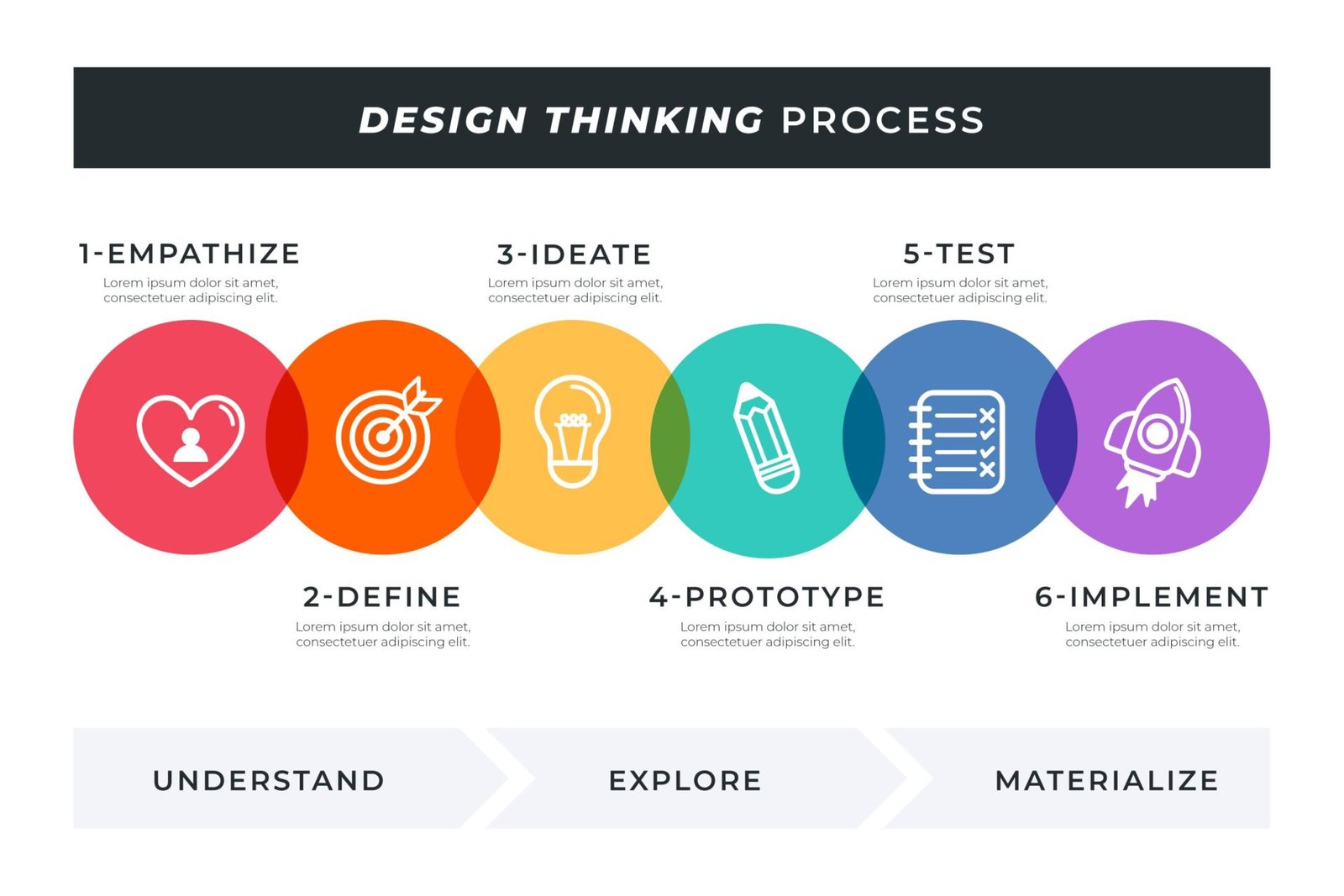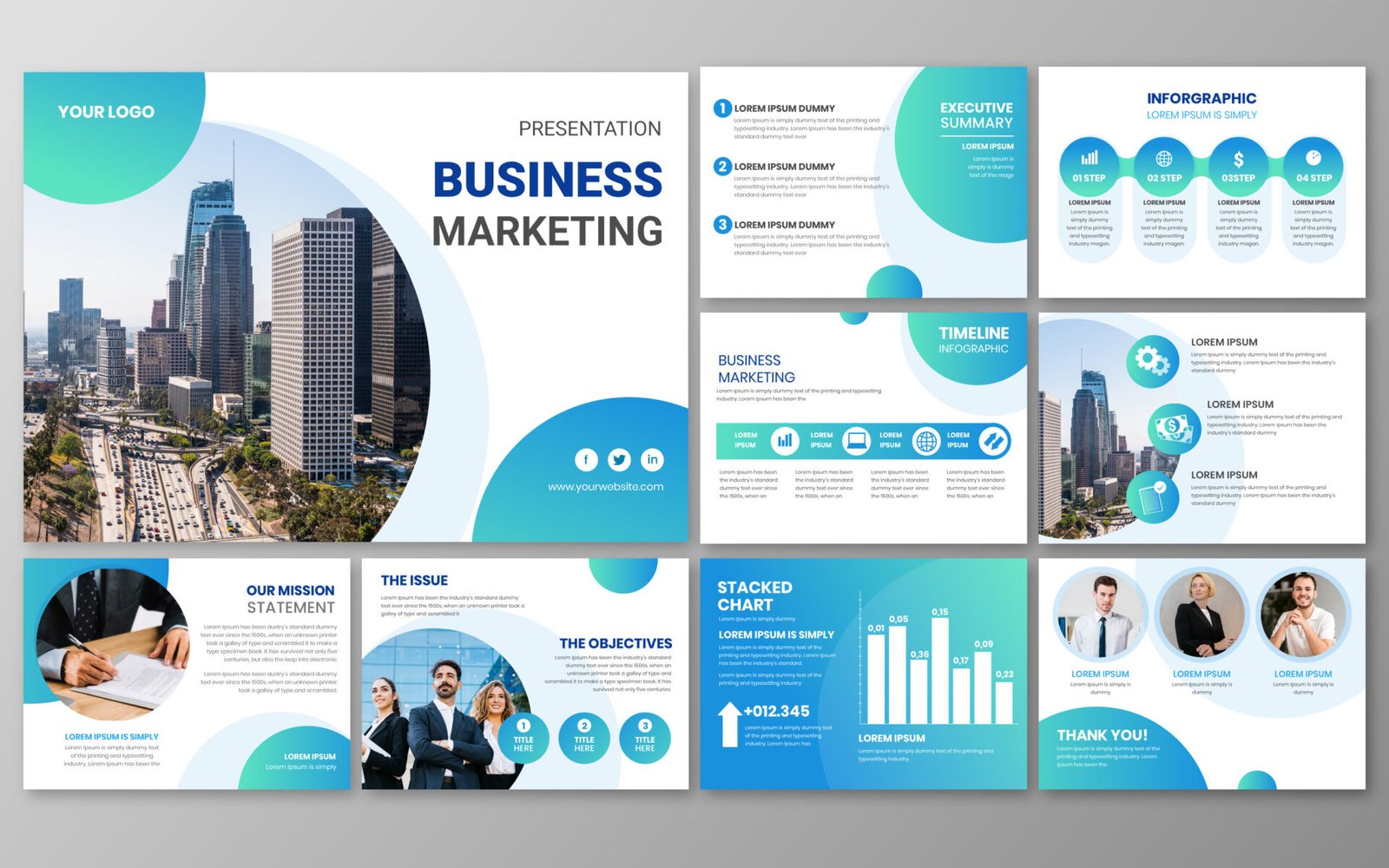Wondering how to make a pitch deck that investors can’t deny? With storytelling and Design Thinking, you can make a pitch deck that sells your business in the snap of a finger.
As a business owner, it is a pretty big deal to get an appointment with investors to pitch your brand, let alone persuade them to invest in your idea. That’s because only 0.91% of entrepreneurs can secure funding from angel investors and only 0.5% can do so from venture capitalists. So, how do you prepare yourself to avoid becoming one of the other 99.09%? The answer: making an irresistible pitch deck. A thorough yet easy-to-grasp pitch deck helps you create not only a good impression but also convince the investors to come on board. But how to make an irresistible pitch deck? By using empathetic storytelling.
The best pitch deck examples are those that are told as a story. However, creating a compelling story that not only engages but also sells is not everyone’s cup of tea. An empathy-driven process of Design Thinking can help you design a pitch deck with empathetic storytelling.
“Every business has a story to tell.”
—Jay Baer,
Renowned Keynote Speaker, Author, Marketing Expert
How to Make a Pitch Deck Using Storytelling and Design Thinking
A pitch deck is a presentation used by business owners to give prospective investors a comprehensive summary of their venture. Now, you must be thinking about what storytelling and Design Thinking has to do with a pitch deck. Wondering how to make a pitch deck using both these tools? Let’s understand the influence of both on pitch deck effectiveness.
How to Use Storytelling in a Pitch Deck
How to make a pitch deck is not as easy as it may look. A pitch deck, for all practical purposes, is the first tool you use to communicate with a potential investor to raise money. As everyone loves a great story, storytelling can be a fantastic tool for enhancing this communication. By weaving your brand values with storytelling, you can present your brand in a way that makes it easier for the investors to picture themselves as part of the story and provides motivation for change or action. A great story will build an emotional connection between your company and your investors, emphasize the value of your product, and demonstrate to them how well you understand your target market. Each of your slides should explain your narrative and should tie them all together to convey the tale of your market expansion strategy
Elements of Storytelling in Pitch Deck
To answer the question, let us give you three essential elements of storytelling: character, conflict, and resolution.
Character: With respect to a pitch deck, make your brand a character so that your target consumers, and investors, can identify and connect with your story.
Conflict: Problems create conflict and we work to create solutions to get rid of them. While creating your pitch deck, become the protagonist and the problems faced by consumers an antagonists. While pitching your business, you must demonstrate how your character (your brand) can change the adversity of your audience (consumers).
Resolution: Give your audience a resolution to make them happy. As you move on to explain your pitch deck, explain how your business model will help consumers achieve a resolution to all their problems. This storytelling element gives the audience context and emotion so they can relate to and understand that your product/service is all they need for their problems.
Rather than taking the usual problem-solution route, give a background story behind your idea and how it is a life-saving product/service.
How to Use Design Thinking in a Pitch Deck

The process of storytelling is based on human emotion. It explains the relationships between individuals in contexts and places while imparting broad teachings that appeal to actual people. People can be engaged by listening, and empathy is a crucial and vital part of the process. Now, Design Thinking is a human-centered approach that allows you to create possible solutions for consumer needs using empathy. Still wondering how to make a pitch deck using Design Thinking and storytelling together? Both these tools can be used simultaneously to create a solution that employs empathy at its core.
If you’re wondering how to make a pitch deck using both tools, let us guide you through the five-step process of Design Thinking:
#1 – Empathize
Empathy is an integral part of the process of Design Thinking as well as storytelling. In this stage, you must keep yourself in the shoes of the audience you’re targeting to understand their behavior.
While you already must know the pain points of your consumers, go a little deeper by wearing their shoes. In the context of a pitch deck, you can conduct various workshops and interviews to empathize with your target audience. This way, you’ll be able to understand their problems and the required solutions and messaging for them.
Here an important part is also to empathize with the investor you are pitching to and try to understand what they might want to listen to as part of the pitch story.
#2 – Define
During the empathy stage, you would have gathered a bunch of problems that your consumers are facing. Imagine if your target audience uses gel pens, their problems will be drying ink, less viscosity, and shorter shelf life. During the “define” stage, it’s time to identify and define the character of your customer and investor, specifying the problems that your business can solve for them.
At this point, craft an actionable problem statement around which your story can be revolved. For instance, offer your target audience a ballpoint pen for it being oil-based, highly viscous and long-lasting.
With respect to creating a pitch deck using storytelling, identifying your problem statement will help you build story themes that sell your business to your investor.
#3 – Ideate
As you build story themes around the problem statement, ideate niche story ideas by brainstorming with your team members. Start building story ideas that compellingly demonstrate your ideas. In this stage, create as many story ideas as possible to build several pitch decks. You can design several storyboards and create story outlines to depict your story ideas effectively. As a prototype is a preliminary version of your ideas, you need not create a full presentation pitch deck. Instead, you can present the storyboards to your team of senior leaders and seek their approval. For instance, you can create a pitch deck that starts with you pitching yourself as a consumer. Describe their everyday struggles, the options they explore to fix their problems, and how your product could be a perfect solution. Do not limit yourself while generating ideas. Let your imagination take you places.
#4 – Prototype
A prototype is something you can interact with. It is a tool for facilitating communication and idea testing. As the value proposition is better understood, you can improve your prototype with more iterations. Not sure how to make a PD prototype? Just tell your pitch deck story through different mediums. You can express your pitch deck story in the form of a presentation or through a comprehensive audio podcast an audio-visual movie or a tangible document. Various forms of prototype pitch decks can help you understand which one connects the best with the investors.
#5 – Test
In the testing stage, you must test your prototypes within a selected set of target audiences. When you create storyboards to present your pitch deck, take feedback from senior leaders. You can also present your prototype pitch deck directly to some known investors initially to figure out its effectiveness. Your pitch deck story can be assessed based on several elements of storytelling such as content, tone, mood, and voice modulation, and may receive a backlash as well. How to make a pitch deck is by being adaptive and agile, and welcoming rejections positively. This way, you can strike a chord with your investors by improvising until you get the best story idea.
Two of the Best Pitch Deck Examples from Real-Life Startups

Let’s learn from two of the best pitch deck examples how to take advantage of storytelling and Design Thinking:
#1 – Tinder
Formerly known as Matchbox, Tinder is one of the most widely used dating apps worldwide. It raised more than $50 million in just three rounds of fundraising. So what makes its pitch deck countable as one of the best pitch deck examples in the world? The story that it tells.
First, they do a great job of explaining the issue with a brief (but relevant) anecdote. Then, rather than discussing the solution, they demonstrate it in their app. It also details about the app’s functionality, including how it functions and what benefits it offers. They let their app speak for itself by providing step-by-step screenshots. The pitch deck concludes with two brief slides that summarize how it could be developed into revenue possibilities.
By using a story to describe a situation, Tinder’s pitch deck becomes more accessible and understandable. A strong pitch deck puts investors in the consumers’ shoes, which is one of the major aspects of both Design Thinking and storytelling and piques their interest in the problem and the potential solution.
#2 – Dwolla
A payment solution app based out of the USA, Dwolla is another startup that uses storytelling into their pitch by using Design Thinking. Dwolla’s pitch deck becoming one of the best PD examples in the USA is rather a great story in itself.
The founder of Dwolla told a fascinating story about how he used to pay $50,000 annually in credit card fees, a pain point for him as a consumer, which in turn made him come up with a business idea that helped millions of people like him to never do the same again. While most firms are founded as a result of a challenge they encountered, few people successfully convey their narrative through PD, and the founder of Dwolla was one of them.
The Bottom Line
Two great tools for communication, storytelling, and Design Thinking, can help you create a PD that’s not only irresistible but also profitable. While storytelling is an excellent technique to illustrate your solution and establish an emotional connection between investors and your business, Design Thinking makes it a systematic framework that makes sure you adhere to the business values that customers need from you. There are numerous methods to tell a story using both tools to attract investors so that all they can think about after leaving the room is your PD. If both these tools are used properly, you will never have to ask how to make a pitch deck again!
About the author
A Haryanvi by origin, an entrepreneur at heart, and a consultant by choice, that’s how Ajay likes to introduce himself! Ajay is the Founding Partner at Humane Design and Innovation Consulting (HDI). Before starting HDI, Ajay founded the Design Thinking and Innovation practice at KPMG India. His 16+ years of professional career spans various roles in product and service design, conducting strategy workshops, storytelling, and enabling an innovation culture. He has coached 50+ organizations and 2000+ professionals in institutionalizing design and innovation practices. He loves to blog and speak on topics related to Design Thinking, Innovation, Creativity, Storytelling, Customer Experience, and Entrepreneurship. Ajay is passionate about learning, writing poems, and visualizing future trends!
We at Humane Design strongly believe in the human ethos and draw inspiration from humans and other elements of nature to design innovative solutions for organizations of all sizes. We will be glad to be your success partner. Email us your requirements at explore@humaned.in.



